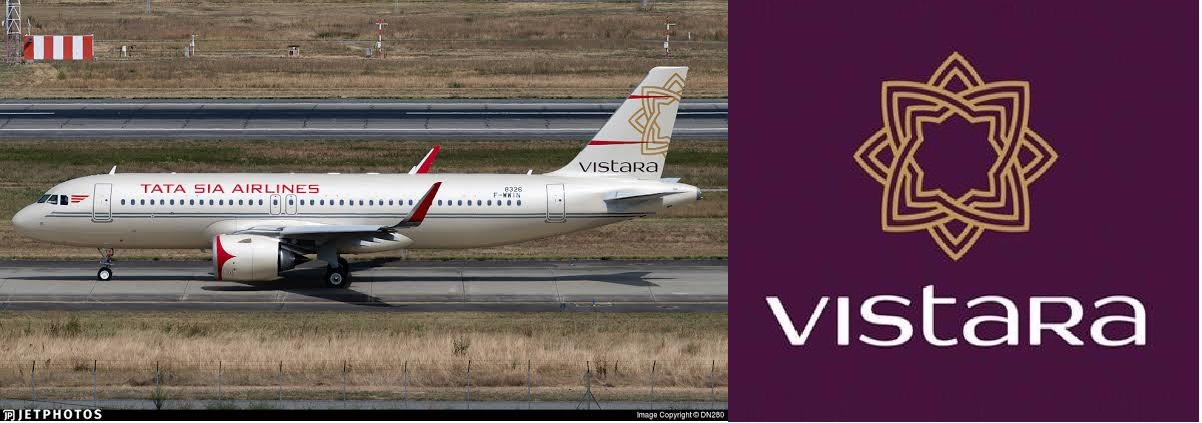[This article was authored by Hrishikesh Bhise, a student at National Law Institute University, Bhopal.]
The Delhi High Court recently witnessed a matter regarding infringement of the popular Indian carrier, Tata SIA Airlines Limited’s registered trademark ‘Vistara’ (hereinafter ‘Mark’). A suit was filed by the airline seeking an injunction against an aviation bookstore, M/s. Pilot18 which, as it was found, sold counterfeit products such as mugs, baggage tags, etc. branded in a manner deceptively similar to the Mark. The Court permanently restrained the Defendants from using the Mark as it amounted to trademark infringement. Expressing its concerns on the security issues, the Court further noted that the sale of the Defendants’ infringing badges could lead to unauthorized personnel’s access to sensitive areas, such as airports.
In arriving at this decision, the Court stressed upon the distinctiveness of the Mark, which according to the Plaintiff’s website is derived from the Sanskrit word ‘Vistaar’ or limitless expanse. The Court stated that the Mark holds a unique status and is rather popular in and across India. As a result, the Court declared the Mark to be a ‘well-known’ one. Through this post, the author shall discuss what a well-known trademark is and analyse the procedure to acquire the status of such mark.
Well-Known Trade Marks and India
A ‘well-known trademark’, as defined in the Trade Marks Act, 1999 (‘Act’), is one which has become so, that a majority of the public using the goods or services bearing the mark would perceive other goods or services with a similar mark to indicate a connection, in the course of trade, of the latter to the former. As of August 2019, there are ninety trademarks which have been declared well-known in India. A well-known trademark has goodwill across India and is awarded better protection than any other trademarks as it provides the trademark owner with an exclusive right to the mark, regardless of the type of the goods or services. Many countries also protect unregistered well-known marks in accordance with their international obligations under the Paris Convention for the Protection of Industrial Property and the Agreement on Trade-Related Aspects of Intellectual Property Rights (the TRIPS Agreement) giving not only deep-pocketed businesses but also smaller ones a chance to establish enough goodwill to allow their mark(s) to acquire the status of a well-known one and be protected without registration.
In India, a well-known mark provides against the bad faith of an infringer of such mark, in addition to granting it the mandatory protection under the Act. A presumption in respect of bad faith in cases involving a well-known mark is arrived at where the degree of distinctiveness of such mark is higher, i.e., if the mark is arbitrary in nature. But, on the other hand, if the mark is generic, its adoption may be seen to be in good faith. In either case, the general rule in respect of well-known marks in India is that they cannot be used or protected by a third party for any goods or services.
Changing the Game: The 2017 Amendment to the Trade Mark Rules
The year 2017 witnessed the enactment of the Trade Mark Rules, 2017 which replaced the Trade Mark Rules, 2002. The new rules seek to simplify the procedure for registration of a trademark and thereby, reduce the delay and red-tapism involved in doing so. Interestingly, they also provide for a novel procedure according to which any trademark owner may file a request to the Registrar to have his trademark declared as ‘well-known’. Until 2017, only a Registrar of Trademarks or a court of law could declare a trademark to be well known during opposition, rectification or infringement proceedings.
The new rules, albeit intended to streamline the procedure to acquire the status of a well-known mark, have certainly led to confusion in the application of such procedure as was seen in the Delhi High Court’s ruling in Tata Sons Limited & Anr. v Mr. Charanjeet Shah & Ors., wherein the plaintiff was directed to file an application under Rule 124 of the Trade Mark Rules, 2017 to have its mark declared as well-known. On the contrary, in Christian Louboutin SAS v. Mr. Pawan Kumar & Ors., the same Court declared the plaintiff’s mark as well-known based on the evidence submitted and under section 11 of the Trade Mark Act, 1999 despite the matter being uncontested. Thus, the new rules do not seem to have done much to curb such arbitrary or discriminatory practices of the courts. Moreover, because section 11(8) obligates the Registrar to accept the marks declared as well-known by courts, Rule 124 only seems to be an additional and an easier way to acquire the status of a well-known mark in lieu of a fee.
While, by circumventing the rigours of time-consuming and expensive litigation proceedings, the new procedure has eased the process of registering a mark as well-known, it is believed to have placed immense power with the Trade Marks Registry – power which is subject to abuse. Thus, for the overall benefit of all businesses in India and the customers which our IP laws seek to protect, such power must be exercised cautiously. Given that it is now easier to file an application for adjudication of a mark as well-known, the Registrar must consider all the relevant evidence and documents submitted by an applicant – a task previously well performed by courts which habitually scrutinize all submissions and annexures in proceedings. In the absence of these steps, the procedure for obtaining a well-known mark shall be declared ineffectual and create further restrictions on adopting marks.
In conclusion, the new procedure will undoubtedly help India to improve its spot on the World Bank’s Ease of Business ranking and bring more investment into the country, but utter care must be taken to ensure that a status, as important as that of a well-known mark, must be granted only after strict scrutinization.



